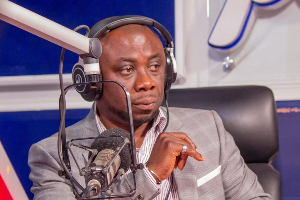Audiovisual communication has globalized capital markets and with popular culture as a major beneficiary, new media channels like satellite TV are accelerating the phenomenon even further. Local entertainment content can now reach a larger audience through formats like MTV Base. The channel has allowed access to cross cultural mainstream music and movies and the effects are determining how young people define their identities either through fashion, language and other dynamics that form part of our social engineering systems.
Akon’s recent video shoot in the country proved how collaborative ventures with international filmmakers could provide new ways for local directors to reposition and advance their audiovisual communication. For the first time over 15 Ghanaian directors networked, learnt and conceptualized a music video for a major hiphop act.
Everyone is now waiting to see how upgraded technique and know-how will pay off in the new generation of music videos coming soon. The project also exposed the non-availability of basic production hardware like dolly tracks, film cameras and professional lightening systems, which had to be flown down for the video.
The shoot started in the Cape Coast castle and the surrounding fishing communities, and for video directors like Kpakpo Addo, learning new ways to fully explore product placement and symbolism through music videos. This will broaden avenues for the hype of media and marketing getting to everybody currently. “People relate to images projected to them; in effect we now have an opportunity to define our culture to the world in more creative ways other than having to resort to the cliché drumming and dancing,” Kpakpo says.
Panji Anoff thinks the workshop was a humbling experience and indeed such projects will reduce the creative boundaries usually set by small budgets. “Ghanaian directors are more creative than their budgets make them appear but now a lot of us have learnt how proper lighting and camera handling enhances images even when shooting on video,” says Panji.
Everybody on the set it seemed learnt aspects of film production through equipment handling, scene construction and coordination. Phamous People’s Gerald Ogee has a few misgivings but on the whole the experience was worth the while.
“It’s important that we as directors start shooting on celluloid but that also means that we need film labs that will process the reels”, Ogee says. “Shooting on film will not only give the production of local movies and videos a facelift. We are looking at an opportunity that will allow us to grab a piece of the action on international projects of this kind.”
The only film lab in the country is a non-functional one at the National Film and Television Institute so anything shot on film has to be developed in Europe or the US. Film students have been using video for many dog years since the lab stopped operating.
After the sun set in Cape Coast, Akon’s crew moved to Accra to shoot the remaining scenes in parts of the city. Save for the mislabeling of a film canister by one of the NAFTI students, music video director Gil Greene and the MTV crew successfully put together a video for Akon’s new single that should start airing on MTV in a few weeks.
Entertainment of Wednesday, 6 September 2006
Source: JIVE

















